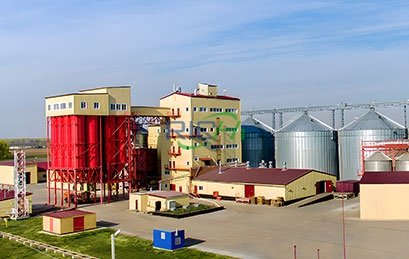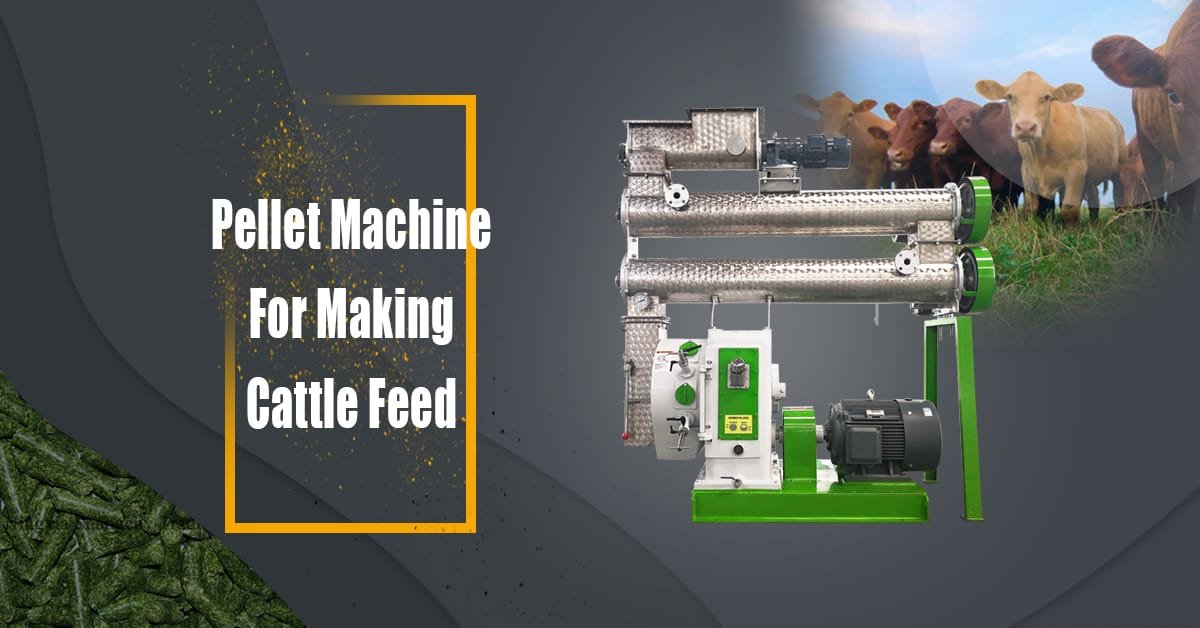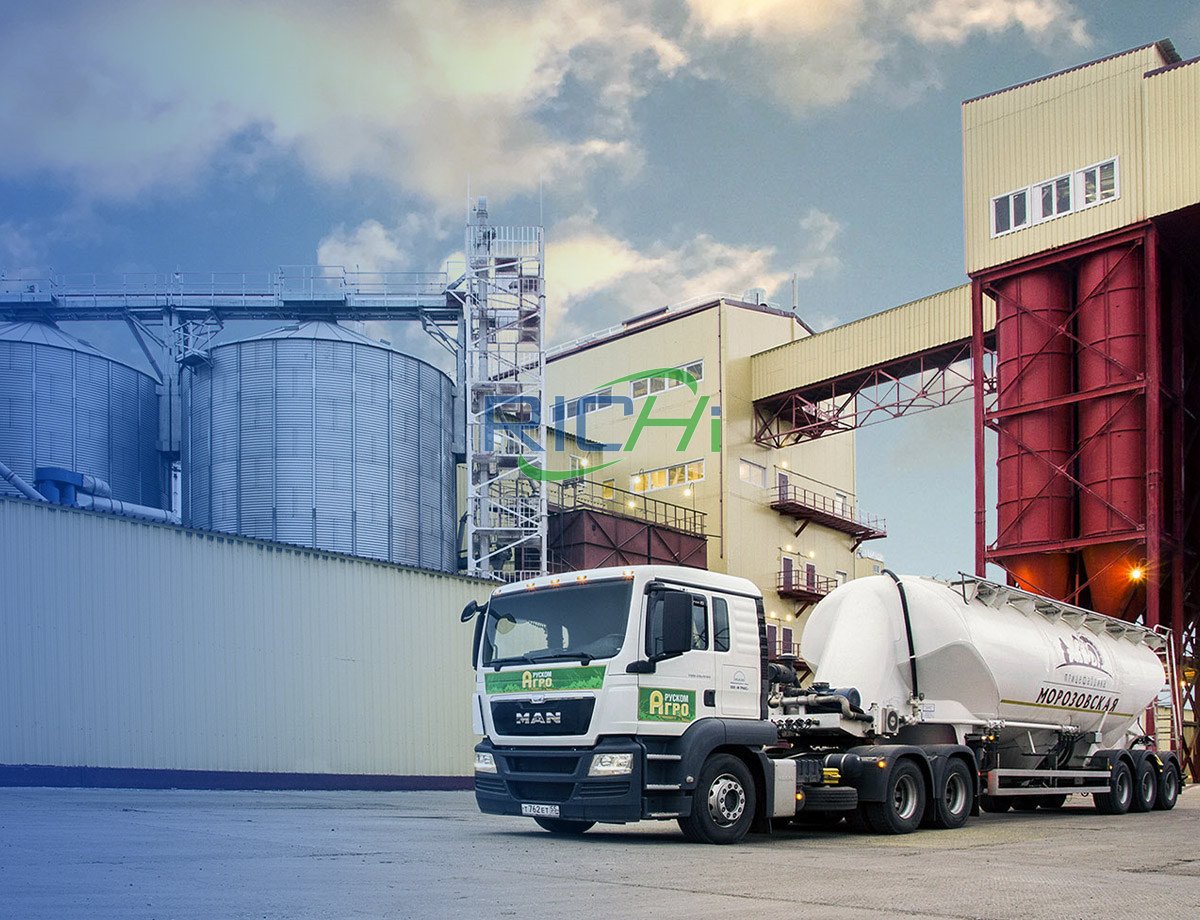When implementing animal feed production lines in the range of 2 to 100 tons per hour, several challenges arise that require precise program design, equipment selection, site layout optimization, and efficient installation. RICHI Machinery has extensive experience in handling these challenges, offering turnkey project solutions that address each customer’s unique needs. Below are a few project case examples, outlining the problems encountered and the solutions provided.
Case 1: 20 Tons Per Hour Animal Feed Production Line for Poultry Feed
Program Design Challenges
- Problem: The customer required a flexible production system capable of producing different types of poultry feed while minimizing operational downtime.
- Solution: RICHI designed a multi-stage processing line with modular mixing and pelletizing systems. By integrating multiple batching and mixing bins, the production line could switch between feed formulations without significant downtime. This design increased the overall efficiency of the production process.
Site Problems
- Problem: The available land had space constraints, with limited room for expansion.
- Solution: RICHI Machinery optimized the layout by designing a vertical feed mill system. This design significantly reduced the horizontal footprint of the plant, making it suitable for the confined space. The vertical arrangement allowed for better material flow and process efficiency, with gravity assisting in the movement of raw materials.
Equipment Problems
- Problem: The customer initially specified an outdated mixing and pelleting system that was insufficient for the required capacity and not energy-efficient.
- Solution: RICHI upgraded the equipment to a ring-die pellet mill equipped with energy-efficient motors and advanced conditioning systems. This solution not only met the production capacity but also reduced energy consumption by 15%.
Installation Problems
- Problem: Delays in shipping some critical components created bottlenecks during the installation phase.
- Solution: RICHI deployed additional local resources and worked closely with logistics partners to expedite delivery. On-site engineers re-sequenced the installation tasks to minimize downtime, allowing the project to be completed within the originally planned timeframe.
After-Sales Problems
- Problem: After six months of operation, the customer reported excessive wear on the ring die, which affected pellet quality.
- Solution: RICHI provided technical support to optimize the material formulation, which was causing undue stress on the die. Additionally, RICHI replaced the die with a higher-grade alloy material that was more suited to the specific raw materials being used.
Case 2: 50 Tons Per Hour Cattle Feed Production Line
Program Design Challenges
- Problem: The animal feed production line needed to handle a wide range of raw materials, including coarse and fine grains, as well as additives, while ensuring consistency in final product quality.
- Solution: RICHI employed a high-precision batching system combined with an automatic grinding unit capable of adjusting particle sizes. This system ensured that different types of feed, whether coarse for cattle or fine for calves, could be produced consistently with minimal manual intervention.
Site Problems
- Problem: The site had uneven terrain, which complicated the installation of heavy machinery.
- Solution: RICHI’s engineering team conducted a detailed geotechnical survey and redesigned the foundation to accommodate the uneven ground. The solution involved reinforced concrete structures and specialized vibration-dampening mounts for the machinery, ensuring stability and safety.
Equipment Problems
- Problem: The customer faced significant issues with overheating in the pellet mill during high-capacity production.
- Solution: RICHI introduced an advanced cooling system that included a counterflow cooler, reducing pellet temperatures before bagging. This cooling system improved pellet quality and prevented thermal damage to the equipment, ensuring continuous high-capacity production.
Installation Problems
- Problem: The remote location of the site created logistical issues for the delivery of large equipment, causing delays.
- Solution: RICHI implemented a staged delivery system, shipping smaller, modular components that could be assembled on-site. By pre-assembling certain parts off-site and using smaller vehicles for transport, RICHI was able to avoid delays and reduce overall installation time.
After-Sales Problems
- Problem: The client experienced clogging issues with the raw material intake system after initial operations.
- Solution: RICHI’s after-sales team conducted an on-site inspection and determined that the clogging was due to the improper storage of raw materials. The team provided training on raw material handling and storage, and adjusted the intake system to allow for better flow and less clogging.
Case 3: 100 Tons Per Hour Fish Feed Production Line
Program Design Challenges
- Problem: The animal feed production line required precise control of pellet buoyancy for floating fish feed, a critical factor in aquaculture feed production.
- Solution: RICHI integrated a dual-stage extrusion system with advanced control software that allows the operator to fine-tune temperature, moisture, and pressure settings. This customization resulted in consistent pellet quality with controlled buoyancy, meeting the client’s specific requirements for floating feed.
Site Problems
- Problem: The customer’s site was located near a coastal area prone to high humidity, which could impact raw material quality and machinery performance.
- Solution: RICHI designed the facility with specialized dehumidifying systems and corrosion-resistant coatings on all machinery components. This ensured that both the raw materials and the equipment remained in optimal condition despite the challenging environmental conditions.
Equipment Problems
- Problem: The extrusion equipment initially struggled to maintain the desired feed pellet size during high-capacity runs.
- Solution: RICHI upgraded the die plate and cutting system with more precise adjustment mechanisms. This allowed for consistent pellet sizes even during peak production hours.
Installation Problems
- Problem: The installation team encountered issues with integrating the new line into the existing infrastructure without causing long-term production interruptions.
- Solution: RICHI implemented a phased installation approach, where sections of the new line were installed and tested sequentially. This approach minimized production downtime and ensured a smooth integration into the existing system.
After-Sales Problems
- Problem: The customer experienced difficulties in training their staff on the new technology, leading to operational inefficiencies.
- Solution: RICHI provided in-depth training both on-site and through remote assistance. A dedicated after-sales team remained available for troubleshooting and optimization advice, helping the customer to fully utilize the advanced technology.
Conclusion
RICHI Machinery’s turnkey project capabilities have been proven in numerous animal feed production lines ranging from 2 to 100 tons per hour. By addressing challenges related to program design, site conditions, equipment performance, installation logistics, and after-sales support, RICHI ensures that each project meets the specific requirements of its clients. Whether dealing with issues of space, equipment overheating, or operational training, RICHI provides tailored solutions that guarantee successful project execution.










